After getting the kitchen back to a blank canvas, it was time to start thinking about the flooring. It’s much easier to tile the floor before you put your base units in as you’ve got a nice, big, clean space to work in and you can level out the flooring which makes putting down your units easier.
I decided to opt for ceramic tiles as these have several benefits. So I bought these grey slate effect tiles from Tile Mountain. What I really liked about them was their matt texture which makes them less slippery; this is always handy when you’re rushing around first thing in the morning in your socks. As they’re porcelain, they are not only more durable but also require less of the faffing about and extra maintenance that natural slate needs.
The package arrived quickly and without a single breakage of the (over a hundred) floor and wall tiles I had ordered – I was dead impressed! It was time to get tiling…
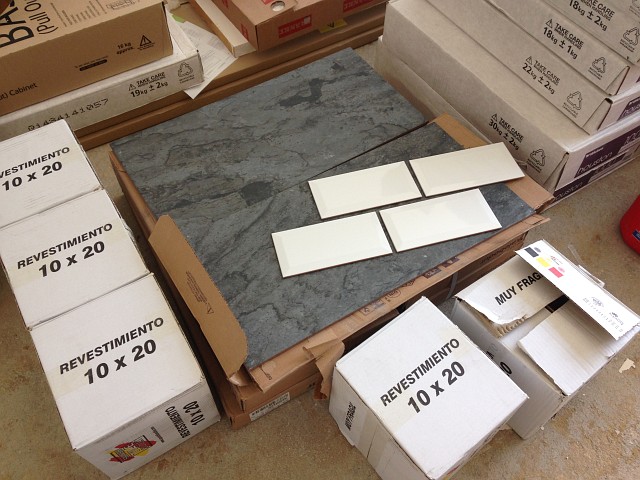
This particular type of tile has 14 different designs so it’s really easy to avoid repetition and matching tiles in your lay out. I’d definitely recommend getting tiles which have lots of different designs, as it makes creating your lay out much, much easier. What you want to do first, is lay down all of the tiles on the floor where they will be positioned. You need to check that no two matching tiles are close, that your favourite or best tiles are front and centre in the space and that the tiles look ‘right’ next to each other. This isn’t the sort of thing someone fitting a kitchen would take the extra time and care to do, but it is certainly worth doing yourself and is a really nice way to make your kitchen totally perfect.
After I had laid the tiles down, I then needed to clear the floor but didn’t want to loose all my tile positions. My solution to this was to label up the tiles with masking tape.
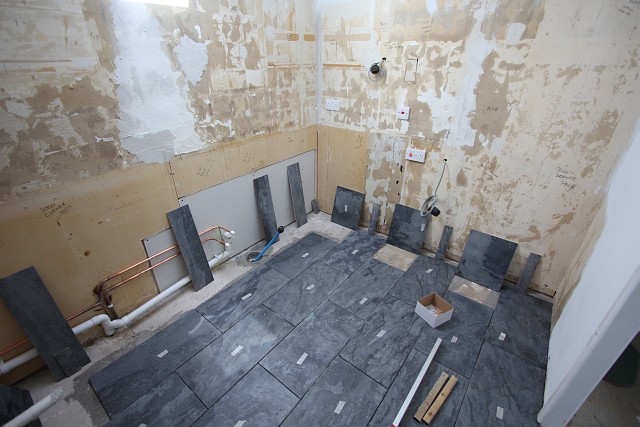
I started from the centre of the room and worked outwards, making sure I was able to get the entire floor nice and level. As I had already dry laid the tiles, I was confident in the design and knew I wouldn’t have any dodgy looking edges. Luckily as well, the room was nice and square. Some tradesmen wont bother tiling under the units and whites as this just takes added time and expense. However, if you are doing it yourself, I’d definitely recommend it as it makes it a lot easier to slide your whites in and out and will give you a great level starting point to put your base units onto.
I put down about a square metre of adhesive and ensured that the first tile was placed exactly on the position I had planned. You need to be very precise with this tile as if it’s wrong, every other tile will be too. I would always advise using tile spacers, they are cheap and you’d be a fool not too. They are designed to be and most people use them, flat on the floor so that they can be covered over when grouting. I find that sometimes they can stick up and make grouting annoying. Therefore, I tend to use them vertically so that, once the adhesive has mostly gone off, you can gently pull them out and not have anything to interfere with the grouting.
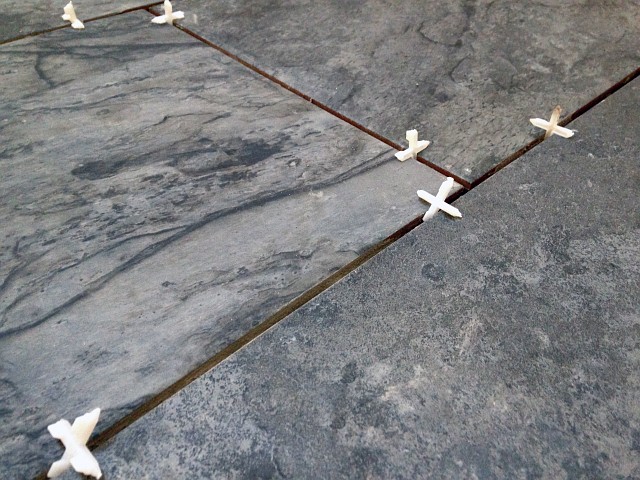
I worked my way around and out of the room, completing all the whole tiles on day one. When the adhesive had cured, I came back and dealt with all of the cut tiles. These were nice and easy and within a short amount of time the tiling was done. Don’t forget to wipe off any excess adhesive on the surface of tiles with a damp sponge as this is a lot easier than trying to get it off at a later date!
The next job was to apply the grout. I had chosen a grey grout which complemented the slate floor tiles. My tiles have a non-absorbent surface so I was able to grout the easy way, by pouring a wet grout mixture over the tiles and spreading it using a grout spreader. Once it had started to set, I smoothed it into all of the joints to get a nice consistent finish.
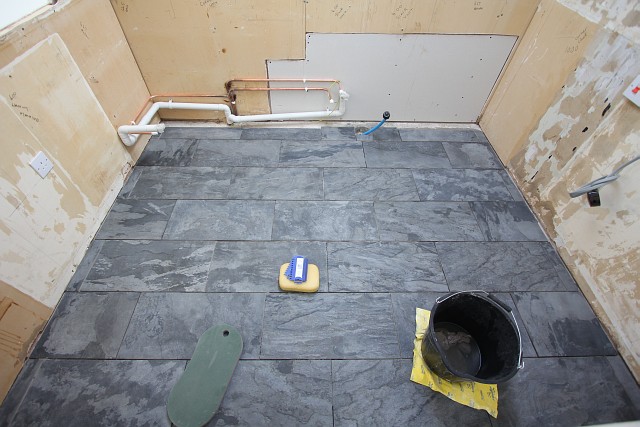
After this, I wiped off the left over grout and cleaned the tiles up. You don’t need to worry about getting them immaculately clean as you’ll do this once the grout has set; you just want to get the most of it up to make life easier for yourself.
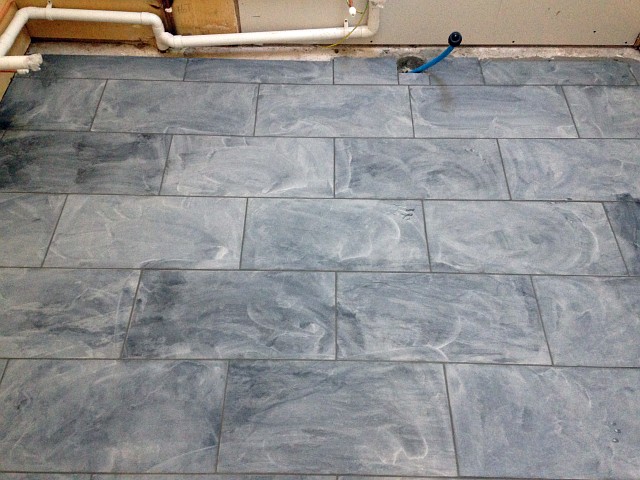
The grout needed an hour to harden. Then when it was hard, I wiped it again with a clean damp cloth and polished the tiles to a good finish with a dry cloth.
All in all, it took a few hours spread over three days to tile the kitchen floor. I saved myself a load of money by doing it myself and by buying the tiles online. It’s not anywhere near as tricky a job as people imagine and you can do a really good job yourself with just a little patience and care. What’s more, is that it’s so satisfying looking at your floor knowing that you didn’t have to pay someone to do it!

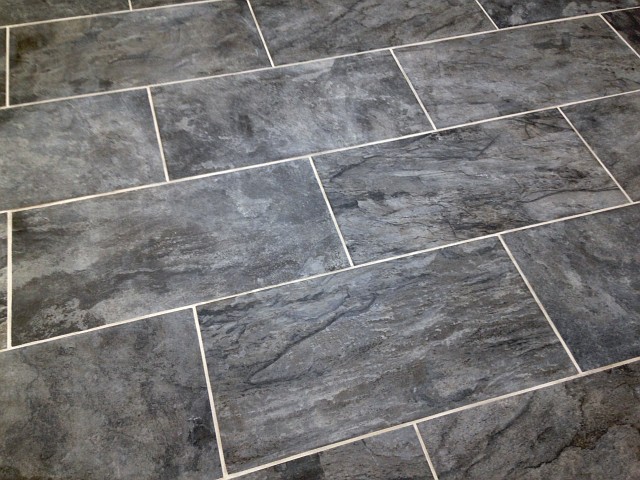
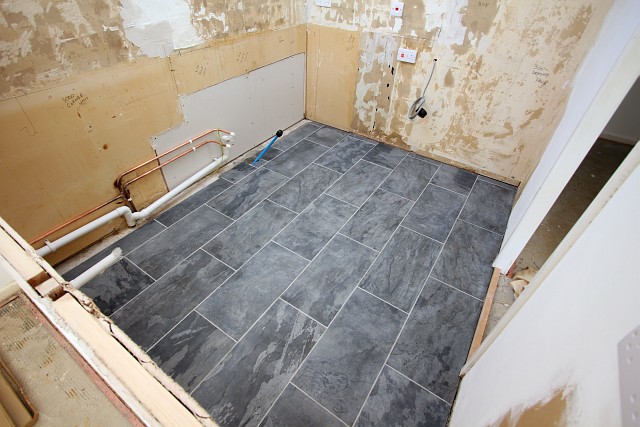
I want to congratulate you on a job well done and to say that you worked superbly on installing the tiles. Even though it took you a while, I am sure that it was well worth the money you saved.